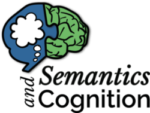Our group is highly interdisciplinary, with more than half of the PhD projects and several research projects spanning different faculties: Philosophy, Medical Sciences (Psychiatry, Audiology), Science and Engineering (Artificial Intelligence), and Behavioural and Social Sciences (Orthopedagogy). Associated PhD students receiving supervision from the Semantics and Cognition group are Merel Semeijn (Faculty of Philosophy) and Abby Toth (Faculty of Science and Engineering). In addition, the group has ongoing collaborations with several universities in the Netherlands as well as Germany, the UK, France, Italy and the US.
In the following you can find a summary of our four main research lines. Please find a list of our publications on the University of Groningen website.
1. Semantics and pragmatics
Emar Maier, Petra Hendriks, Sofia Bimpikou, Anna de Koster, and Irene Mognon
In our first line of research, we use formal and empirical tools to study natural language meaning (semantics) and use (pragmatics). In semantics we focus on how meaning is encoded in linguistic constructs like quantifiers, plurals, pronouns, and speech reports. In pragmatics we look at how language can be used to exchange information, but also to lie, to convey irony and other non-literal interpretations, or to create fictional story worlds. We push the semantics/pragmatics toolkit even beyond language, e.g. to study the meaning of paintings and comics. Some of this research is clustered around the interdisciplinary NWO VIDI project “The Language of Fiction and Imagination” led by Emar Maier. Most of the theoretical topics in semantic and pragmatics covered under this heading also inform the research themes below.
2. Cognitive processing
Simone Sprenger, Petra Hendriks, Atty Schouwenaars, Jorrig Vogels, Amélie la Roi, and Vera Hukker
The second line of research focuses on how native and non-native speakers process linguistic information. We also study the way in which cognitive processes such as memory, attention and Theory of Mind contribute to language comprehension and production, for example in the non-literal and figurative language use that plays a role in idioms and irony. For example, we want to know how effortful it is for different types of listeners (including patients with Alzheimer’s disease and children with autism spectrum disorder) to understand that someone “broke the ice” during a conversation. In addition, figurative language also plays a role in our study of the cognitive effort in speech production of normal fluent and nonfluent (stuttering) speakers. In this line of research, we use and combine methods from psycholinguistics and neurolinguistics such as eyetracking and EEG.
3. Language development across the life span
Petra Hendriks, Simone Sprenger, Atty Schouwenaars, Amélie la Roi, Anna de Koster, Dorothée Hoppe, Leanne Nagels, Iris Scholten, Irene Mognon, and Vera Hukker
A third line of research investigates the typical development of semantic and pragmatic abilities, as well as their atypical development in children with neurocognitive disorders such as autism spectrum disorder and children with hearing impairments. In addition, in the context of healthy ageing we investigate whether semantic and pragmatic abilities such as the understanding of idioms and other multiword expressions decline with age and in adult populations like patients with Alzheimer’s disease. Furthermore, using computational cognitive modeling, we study the mechanisms of learning that are involved in first and second language development. Experimental methods we use for investigating language development are child-friendly behavioral comprehension and production experiments, eyetracking and pupillometry.
4. Perspective taking in language
Jorrig Vogels, Petra Hendriks, Emar Maier, Irene Mognon, and Vera Hukker
The fourth line of research investigates how and to what degree speakers and listeners take each other’s perspective into account when they produce or comprehend language. This line of research was initiated by Petra Hendriks’ completed NWO VICI project “Asymmetries in Grammar” and is continued in Jorrig Vogels’ NWO VENI project “When do speakers consider the listener’s perspective?”. With a focus on reference, our aim is to determine in what way speakers’ and listeners’ linguistic choices are informed by the other person’s communicative needs (either hypothetical or actual), and how the ability to take the other person’s perspective develops across the lifespan.
